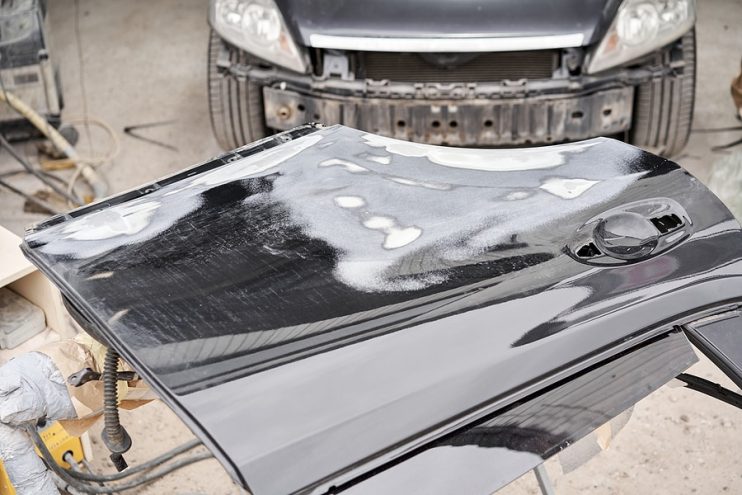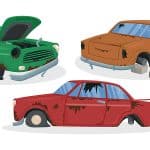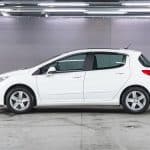
Yes, buying a used car will save you money. However, the greater the age of your potential purchase; the more chance it’s been in an accident.
Less than honest car dealers often have a masters degree in hiding the signs of damage after an accident. However, a quick makeover is often significantly easier than a proper repair, meaning there are tons of tell-tale signs to watch out for, if you want to make sure a second-hand car hasn’t been in a serious prang.
Not every accident will impact the safety and roadworthiness of a car. Nonetheless, severe accidents are harder to hide, and these will often be the incidents that will damage the integrity, handling, and other important facets of a car. Use our list to check out some of the most common signs that can help guide your purchase away from a previously damaged car.
Bodywork Sections Gaps
Check those little spaces around the car. We’re talking gaps between panels, front and back doors, boot or bonnet and bodywork and the wings on the vehicle. You’re looking for consistent, regular spacing, with the gap retaining the same distance between sections of the car; if a panel or section appears too close or far away in relation to other gaps on the car, then this area should attract your attention.
With modern manufacturing techniques, car companies now ensure that everything on a new car is machined to the nearest millimetre. Therefore, you know that when things look out of place, something probably is out of place. Same goes for slight damage or even the vaguest mismatch of colour. So, for instance, if you think the bonnet looks out of place with a skewed alignment, pop it open and scan for signs of a crash.
Paint Problems
Whilst it might be easy to make quick changes to a car, it’s still going to be quite hard disguising any fix, and paintwork mismatches and problems can be one of the biggest giveaways. Straight away you’ll be able to tell those clear differences in colour indicate some kind of work, but it’s not always that easy. Look at the paintwork in a well-lit environment and check for colour, tone, and shine – and even the texture of the paintwork. All of these can give you clues as to whether the car has undergone repairs.
You’ll want to give the interior of the doors, and the areas under the bonnet and wheel arches, extra scrutiny as these places are harder to paint properly, and often get overlooked during rushed replacement work. Ask about colour mismatches, and as with all second-hand car buying – if you aren’t satisfied with the answer you get, then get out of there.

Filler Repairs
Don’t jump the gun with filler. Older cars may have small patches of filler that’s been strategically used to stop the onset of rust. However, filler on new cars or big patches should start the alarm bells ringing. Take a closer look at the work. You’ll want to be on the guard for streaks or cross hatch patterns that are visible through the paint upon closer inspection.
One of the main areas where filler is used is under wheel arches; these areas are often overlooked in repairs because most people don’t bother checking. Don’t be one of those that gets caught out. And if you’re in doubt use the touch test – car surfaces should feel smooth and silky to the touch. Picking up roughness? Filler could be in play here.
Headlights Not Matching
Over time the hard-wearing plastic cases around the headlight will become discoloured, hazy, and scratched through use. Normally, when headlights are replaced by a garage in a service, they’ll swap out both at the same time. So, if one lamp casing looks completely clear, and the other looks like it’s been aged, then the chances are that the newer one has been replaced due to an accident.
Headlights also should be aligned properly. Any sniff of a mismatch is reason enough to pop open the bonnet and have a scout around for those signs of damage.
Windscreen Cracks and Damage
Not all cracks tell the same story. Some will come from everyday use, such as smaller cracks caused by stones and debris kicked up onto the windscreen. Others, such as a larger crack that spans from the edge of the window towards the centre, could well be a sign of an accident. Either way, cracks in the windscreen are a sign that the owner probably isn’t too bothered about proper upkeep of the vehicle. If damage is present, then even if they offer to reduce the price to cover the cost of fixing the windscreen, walk away.
Bolts
Many car manufacturers use special tools that don’t damage the paint on the bolts. Have a good look under the bonnet to check that the paint on any bolts matches the rest of the car. Also look around any joins between the body panels and the chassis. If you find that the paint has been removed from the bolts, that the colours don’t quite match, or the bolts appear to be chewed up or rusty, then this area should warrant a little more investigation, to see if there are any additional signs of damage.
Our Final Word
As a layman it can be quite hard to spot signs of damage if a reasonable enough job has been made to hide them. However, an expert won’t be quite so easy to trick, so to make sure you can rest easy with any purchase, get a mechanic to inspect the car. And it’s always a good idea to go the extra mile and get the vehicle registration mark and run it through one of the many online testing services to ensure the vehicle hasn’t been written off and then put back on the road.









.png)